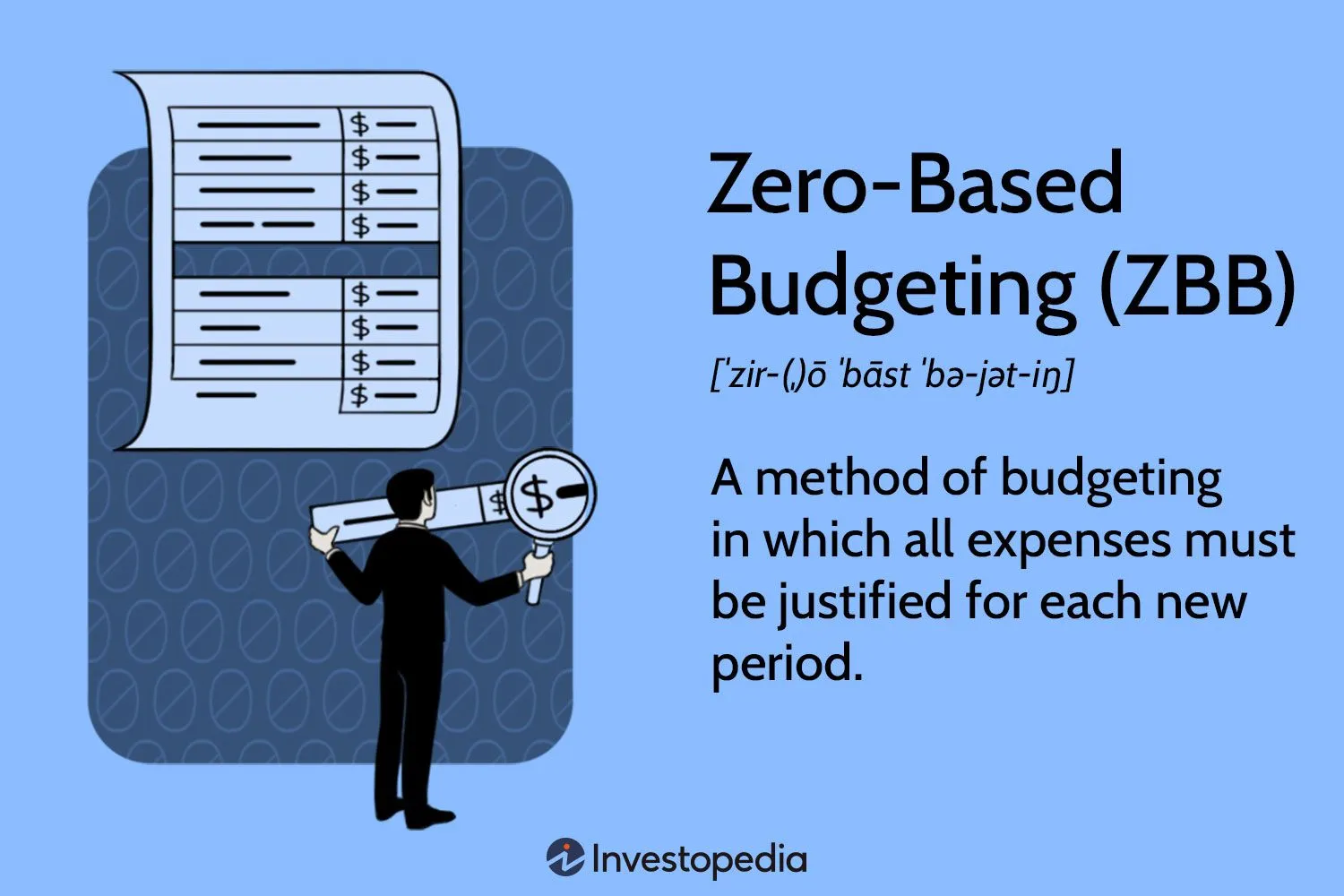How to Implement the Zero-Based Budgeting Method in Fina

Zero based budgeting is very popular in personal finance, because it is very simple but effective. Most of people can understand it easily and implement it in their daily life.
Budgeting tool like YNAB (You Need A Budget) is built around this concept, and it has been adopted by many people to manage their finances.
However, if you do not want to manage your finances in a religious way, you may find it hard to stick, and may not want to continue paying a high subscription fee for it.
Fina is built to be a flexible and powerful tool for personal finance, and we can implement it easily in Fina and use it in a flexible way.
What is Zero Based Budgeting?
Zero-Based Budgeting (ZBB) is a budgeting method where every dollar of your income is allocated to specific expenses, savings, or debt repayment. The goal is to ensure that your budget is always balanced, meaning that your income minus your expenses equals zero.
This method encourages you to think critically about your spending and prioritize your financial goals. The core of ZBB is "allocation" — you assign every dollar a job, whether it's for bills, savings, or discretionary spending.
So it is a simple strategic thinking for each individual how to allocate their income, double thinking if one expense is necessary or not, prioritize for the best use of your money, and make sure you are not overspending.
So what do you prioritize for?
While it is up to you, very commonly people prioritize for long-term sustainable financial health, a practical pattern is 50/30/20 rule, which means 50% for needs, 30% for wants, and 20% for savings or debt repayment.
50/30/20 Rule
The 50/30/20 rule is a simple budgeting framework that divides your after-tax income into three categories:
- Needs (50%): Essential expenses like housing, utilities, groceries, and transportation.
- Wants (30%): Non-essential expenses like dining out, entertainment, and hobbies.
- Savings/Debt Repayment (20%): Money set aside for savings, investments, or paying off debt.
Different coaches may come up with very different names for them, though the core idea is the same - to allocate your income to 3 major areas that almost everyone can agree on.
Here are some examples, I assume you saw them somewhere
- Some people call them "Essentials", "Discretionary", and "Financial Goals".
- Some people call them "Fixed Expenses", "Variable Expenses", and "Savings/Investments".
- Some people call them "Basic Needs", "Lifestyle Choices", and "Future Planning".
- Some people call them "Living Expenses", "Leisure Spending", and "Financial Security".
Now you get the idea, here I also share you a simple category template that follows 50/30/20 rule, you can import it to your Fina profile as a starting point:
- Fixed
- Flex
- Future
Here is the link to the template.
50/30/20 rule in fact is 80/20 rule if we take a bit step further to understand it: 80% of income for now, 20% for future. 80/20 rule is the golden rule in the nature, so no wonder this is a very practical and effective rule for personal finance too.
Steps to Implement ZBB + 50/30/20 Rule in Fina
Given we have a clear understanding of Zero-Based Budgeting and the 50/30/20 rule, let's see how to implement it in Fina.
For practicing below steps, I assume you have already set up your Fina profile, and have connected your accounts for a full view of your financial situation.
I have wrapped all the steps in a Fina template, you can also import it to your Fina account to get started quickly.
Here is the link to the template.
Step 1: Set Up Categories
To start, please follow previous category template link to import the category setup, you may add/edit/remove subcategories as you wish.
"+ ai-tag" mapping is very smart tool in Fina that will save you huge time to cleanup and categorize your transactions, so please take some time to map them to your categories.
Step 2: Build Income Blocks For Simple Allocation
We will add a new Fina Page, you do not need this if imported from the template already.
First, let's place a Fina block, edit it, in the editing panel, click "add metric" and select "Total Income" metric.
Pay attention to "Account Selection" if you have a lot of accounts, just select the accounts that should be included in the income calculation.
Next, let's place 3 single number blocks in a row to calculate 3 buckets to allocate your assignable income to, in this block, we will use formula to calculate the live value of each bucket:
- Add a formula metric in block edit panel.
- Add two variables in the formula editor, one for total income, one for the percentage of the bucket (constant metric).
Step 3: Set Up the Budgeting Block
In the last step, we just add one single block to show the budgeting table:
- Type '/' in the page.
- Select "Category List w/ Budget" block.
- All expenses will be shown in the table under the F3 buckets, and let's copy those 3 assignable values to the budget column of each bucket.
Currently Fina does not support citing the block metric in budget column for automatic budget value, so you need to copy the value manually. But we will support citing metric in budget column in the future, stay tuned for that!
Step 4: Sign In and Check this Page
Now this page is ready and goes live automatically. Just sign in Fina and check this page to see if you are under budget.
Fina will support automatic alerts through email for budget overrun. Please check with the team when it is available.
Congratulations! You have successfully implemented Zero-Based Budgeting with the 50/30/20 rule in Fina. This method will help you allocate your income effectively, ensuring that every dollar has a purpose and contributes to your financial goals.
Conclusion
Zero-Based Budgeting is a powerful method to take control of your finances. By implementing it in Fina, you can easily allocate your income, track your spending, and ensure that you are always working towards your financial goals. If you have any questions or need further assistance, feel free to reach out to the Fina community or support team.
